ECOSYSTEMIC STRUCTURES
AN ATTEMPT TO STRUCTURAL ECOLOGICAL THINKING
INDUSTR(H)YBRIDIZATION
0- MANIFESTO
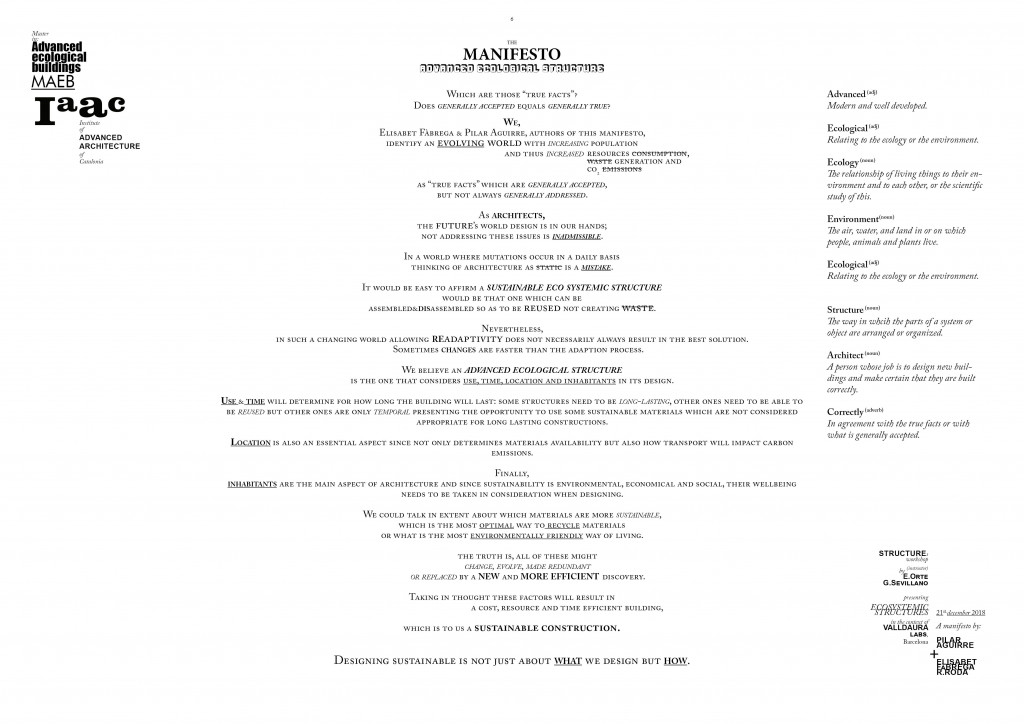
The structure of an advanced ecological building should look beyond the strict bearing requirement and its autonomous resolution with the minimum amount of material. The aim is to explore and design structural systems witht the resilience and topological ductility necessary to meet requirements of all kinds, beginning with issues of space, form and matter, questions of manufacturing, transportation and assembly and concerns even beyond that.
1-PRELIMINARY APPROACH – structural variations
through an experimental approach, we started defining different possibilities for a structure, (at that first step, detached from a specific building). Each one of the explorations is based on different principles and tested in working models.
1. Folded
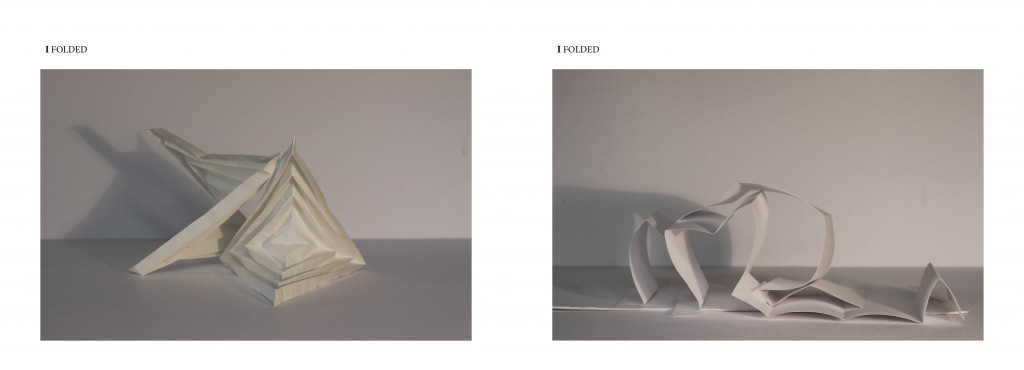
material: paper/pasteboard.
explorations: folded+rigidity by shape.
2. Membrane / 3. Linear
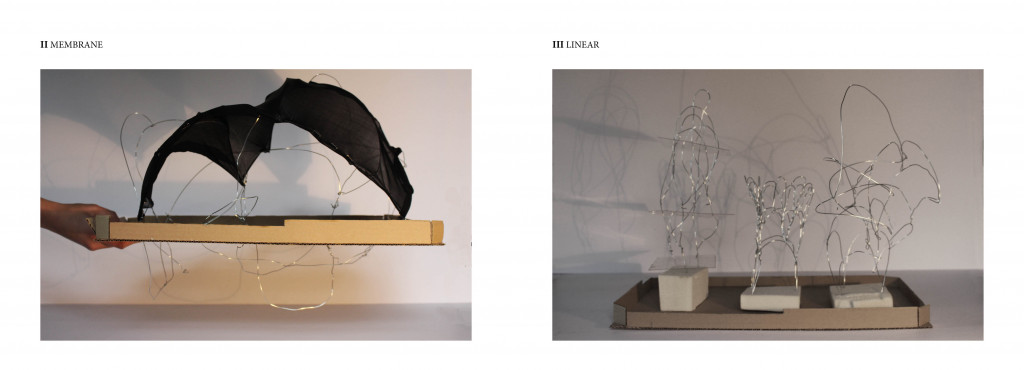
(membrane)
materials: (1ary structure) wire / (envelope) tights.
explorations: stretching the textile envelope exploring the continuituy and connections in multiple directions and levels.
(linear)
material: wire.
explorations: intensify the difference in densities, heights and singularities. Explore compression/tension.
4. Adaptable / Responsive
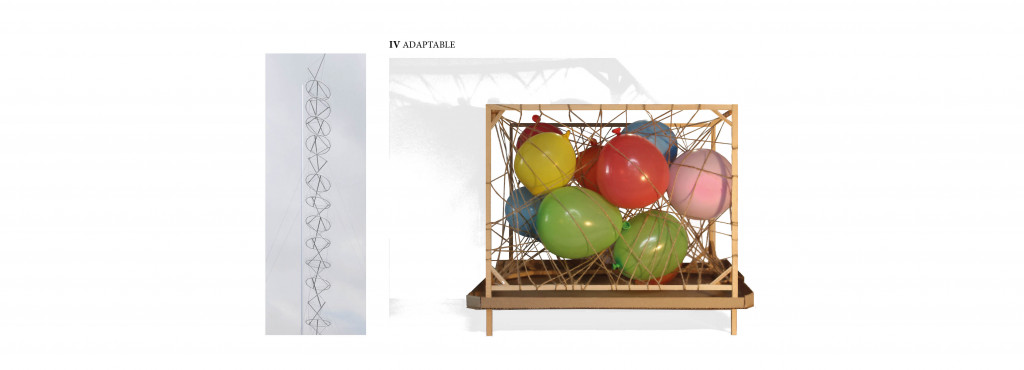
materials: balloons, wool/elastics, wood/cardboard frame.
explorations: symbiosis inflatable-linear elements. Challenge: building inflatable elements in vertical.
In the linear model, first the program is defined, and then the structure is set according to that design. Therefore, if the program changes, it has to adapt to the fixed structure. Aversely, in the Adaptable approach the program (balloons) can change and the structure is the one that constantly adapts to that changes. The strings (ideally elastic) constantly respond to the changing programatic needs. The real challenge here would be to get rid of the wooden frame defining the boundary. A way to explore it further is working with tensegrity.
The program are spheres (or could acquire other shapes) working as isolated components in compression inside a net of continuous tension, in such a way that the compressed members do not touch each other and the prestressed tensioned members delineate the system spatially.
2. PROCESS – the prototype first steps
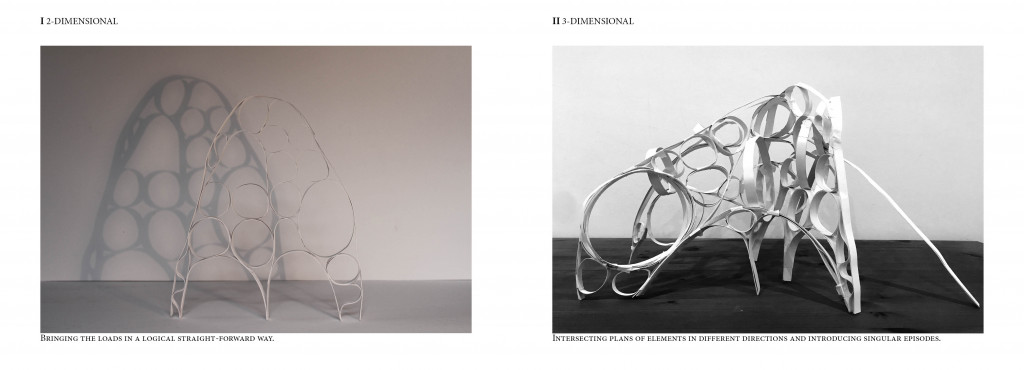
1- 2dimensional: bringing the loads in a logic straight-forward way.
2- 3dimensional: intersecting plans of elements in different diretions and introducing singular episodes.
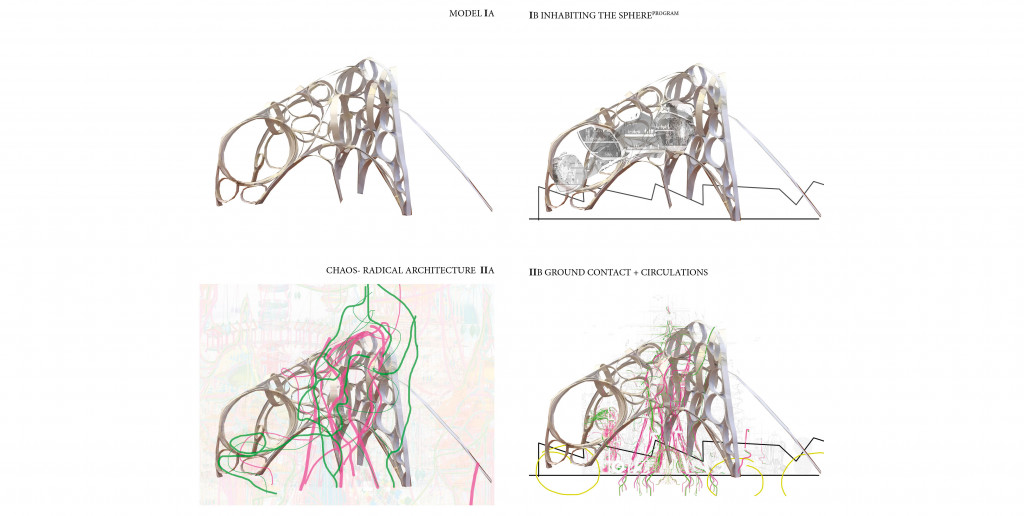
3. PRINCIPLES – the prototype final model
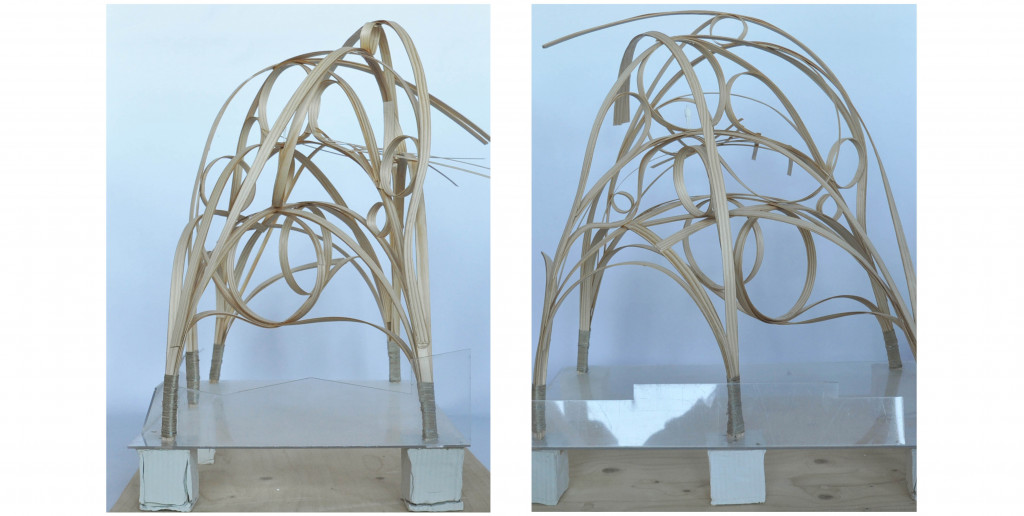
1-Optimizaion
The structure Works transmitting the loads through geometry (arches and circles).
The primary structure (major arches setting the boundaries) secondary structure (minor arches to stiffen the whole).
2-Alteration
Mainly given by the secondary structure. The variations in volumetry, size and position responds to the program variations/demands and to the orientation (responding to the site through bigger openings in the south and more opacity east-west to control it.
3-Structural Details
Superficial: Joints
Tangential: high performance adhesives + screws
Foundations: Concrete.
4-Existing Building
Due to the Project decision to preserve the existing building, the structure touches the ground in a few controlled points, branching later in multiple different arches responding to the various demands.
5-Construction
Wood from a nearby site. The design would set a basic system that can adapt to the nature of the trees we find in the site, which means the selection of which trees to cut will depend on their shapes- so as to fit arch-forms and use as much material as possible.
6- 3dimensionality
Intersecting plans of elements in different directions and introducing singular episodes.
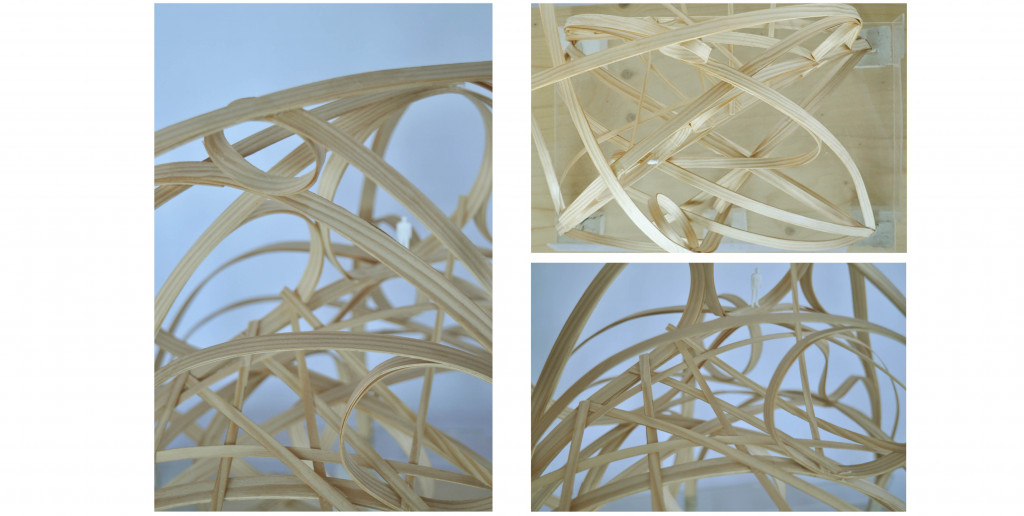
THE PROTOTYPE
Contemporary structure optimizing the quantity of the structural material to use.
4. INHABITING THE SPACE- from prototype to reality
To work further: arches could work better than complete circles since the possibility to create surface with that last ones is tricky.
Bringing the loads in a logical direct way.
HOW TO inhabit the space generated?
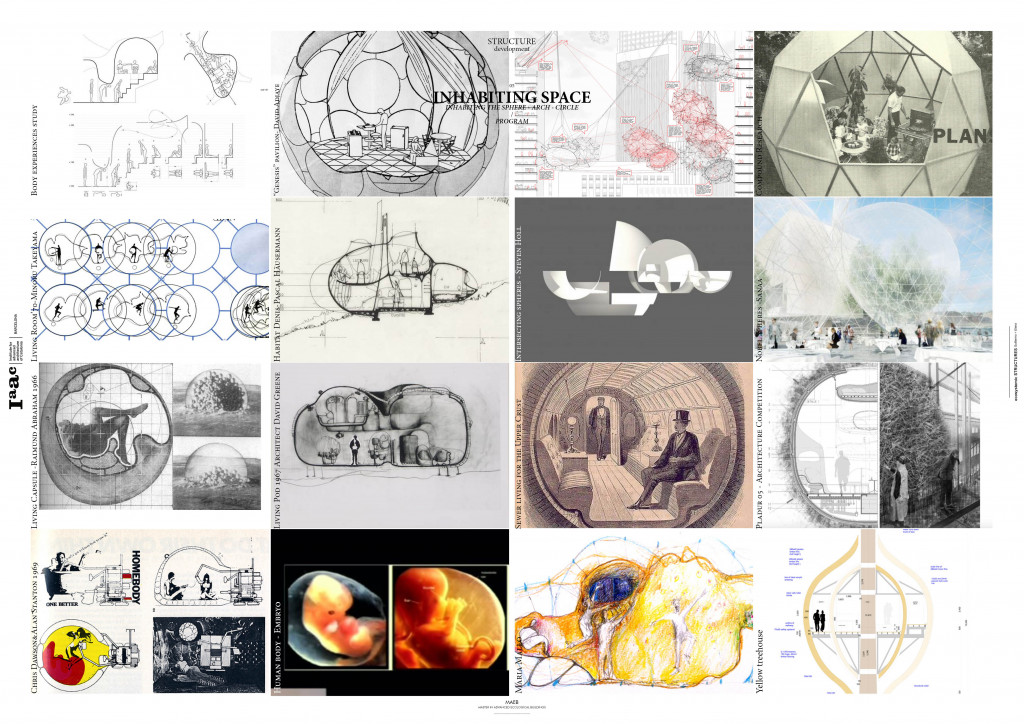
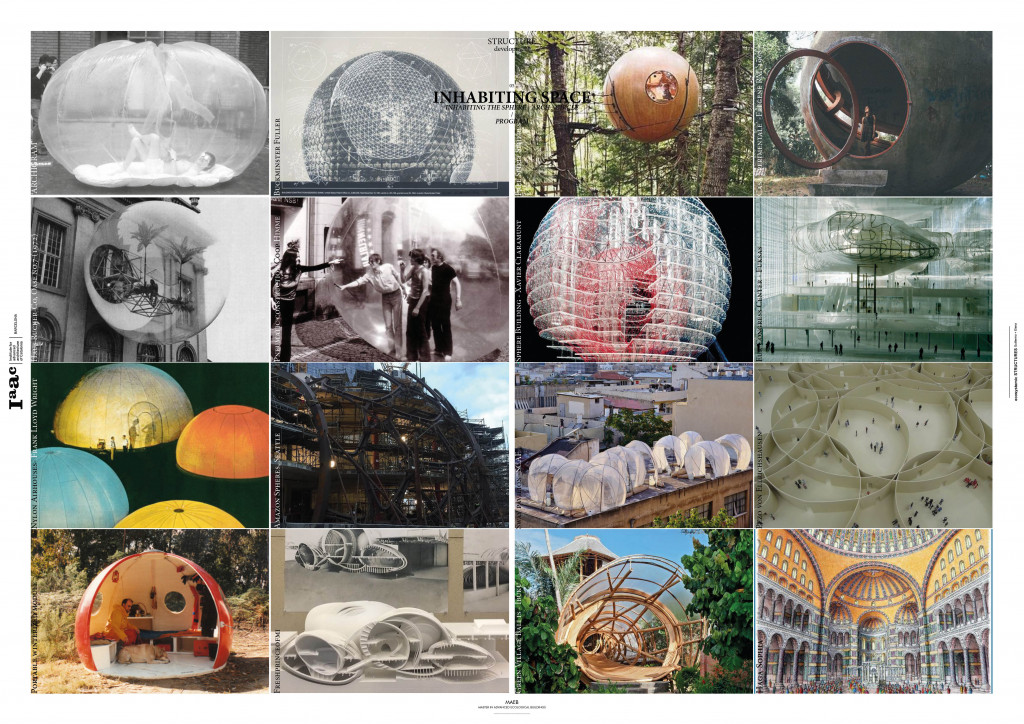
/PROJECT BY Pilar Aguirre + Elisabet Fàbrega R.Roda /DEVELOPED AT Iaac (Institute for Advanced Architecture of Catalonia), Valldaura Labs /COURSE MAEB (Master in Advanced Ecological Buildings) 2018-2019 /PROGRAM Ecosystemic Structures (M03) /LEADED BY Guillermo Sevillano + Elena Orte